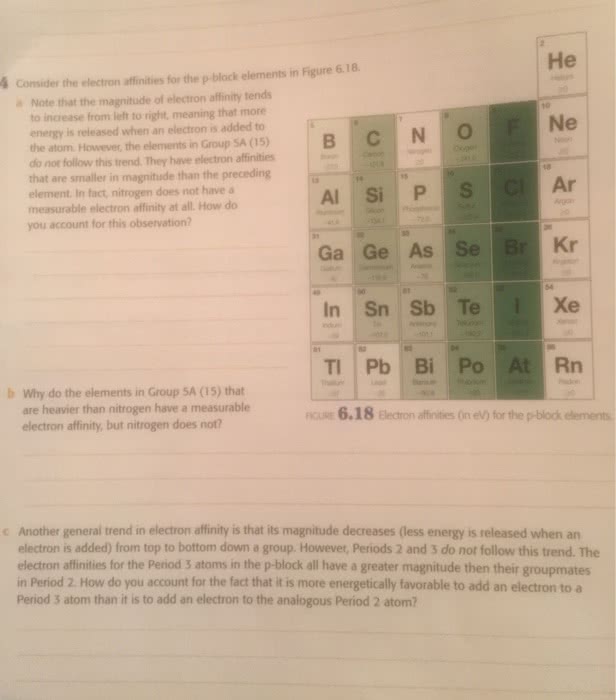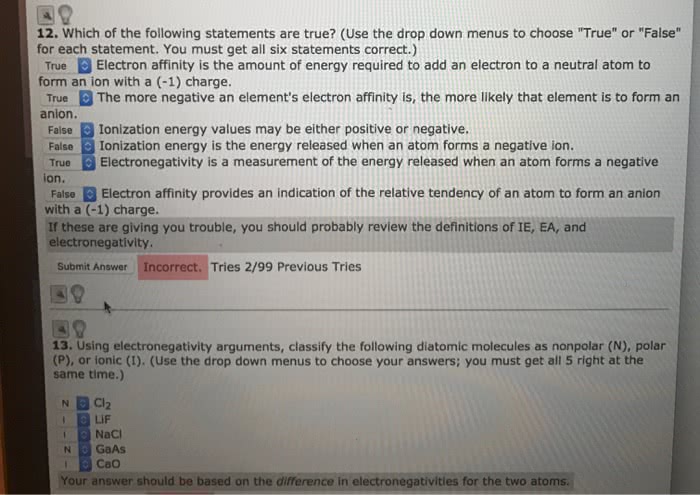CHEM 14A Chapter Notes - Chapter 1F.5-8: Electron Affinity, X Window System Core Protocol, Diagonal Relationship
Document Summary
Electron affinity: the energy released when an electron is added to a gas-phase atom. Positive: energy is released when an electron attaches to an atom. Negative: energy must be supplied to push an electron onto an atom. The electron affinity of an element x is defined as. E(x): the energy of a gas-phase x atom and e(x-) is the energy of the gas-phase anion. Electron affinity is much less periodic than variations in radius and ionization energy. One broad trend is clearly visible (except for the noble gas) Electron affinities are highest toward the right of the periodic table. This trend is particularly true in the upper right. The incoming electron occupies a p-orbital close to a nucleus with a high effect charge and can experience its attraction strongly. The noble gases have negative electron affinities because any electron added to them must occupy an orbital outside a closed shell and far from the nucleus.



